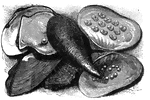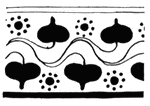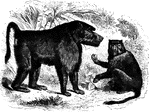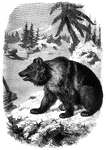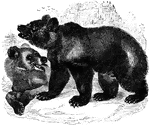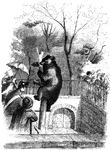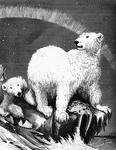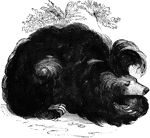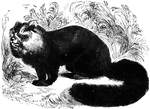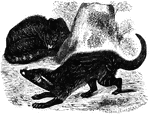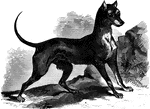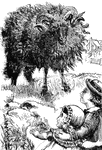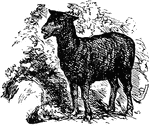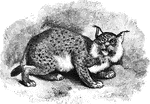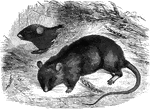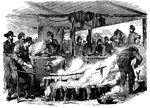
Cooking in Camp
The kitchen of the Fremont Dragoons at Tipton, Missouri. Tipton, which is 38 miles from Jefferson City,…
!["First and last review of the First Regiment, South Carolina [African American] Volunteers, on Hilton Head, S. C., under Colonel Fessenden, U. S. A., June 25th, 1862. Our correspondent at Hilton Head wrote us: "I witnessed the parade entire, as well as the company drills in the manual of arms, etc., afterward, and I must acknowledge my complete surprise at the discipline and even vim evinced by the sable crowd. Dressed in the regulation uniform of the United States Army, tall and strong men generally speaking, they, considering that the regiment had not been fully armed but about ten days, spoke well for officers and men."" — Frank Leslie, 1896](https://etc.usf.edu/clipart/11000/11043/1stregiment_11043_mth.gif)
First Regiment
"First and last review of the First Regiment, South Carolina [African American] Volunteers, on Hilton…
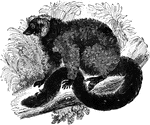
Red Lemur
"This lemur is noted for its brillant colorings, the greater part of the body being covered with a vivid…
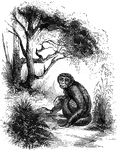
Diadem Monkey
C. diadematus. This monkey is nearly black, the lower prts being green. It is marked with a…
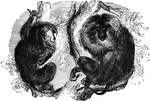
Wanderoo Monkey
"M. Silenus, has its hair deep black throughout, with the exception of the long beard mane,…
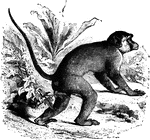
Buffon Macacus
"M. cynomolgus. The hair of this mammal is short, of a brown olive, spotted with black on the…
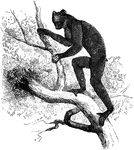
Indri
"Genus Indri: Indris. - This genus includes only a single species, the Short-Tailed Indri of Madagascar,…
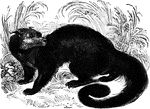
Black Binturong
"Of this genus, there is only one species, the Black Ictide. Colored black with speckles of…

Coati Mondi
"They are distinguished by a long body, a long head terminating in a long flexible snout, with which…
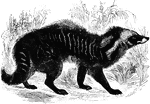
Civet
"Of this genus there are two species. The length of the elongated body of his animal is from two to…
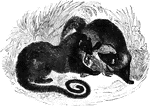
Pougonie
"P. typus, is of a yellowish brown, marked with three ranges of obscure spots on the back.;…
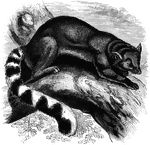
Ring-Tailed Bassaris
"It has a sharp, pointed nose, and a cunning expression, reminding one of a fox or raccoon. The body…
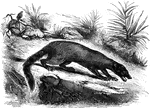
Galidia
"Of a lively russet, spotted with brown and olive, the tail being annulated with black. It is ten inches…
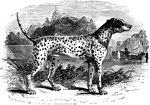
Dalmatian
"Its body is generally white, marked with numerous small round black, or reddish-brown spots. The dalmatian…
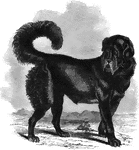
Thibet Masiff
"The thibet mastiff is of immense size, and of a deep-black color, slightly clouded on the sides, his…
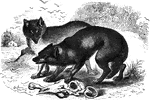
French Wolves
"The common wolf is of the size of a large dog; its usual color is a yelowish gray: the hair strong…
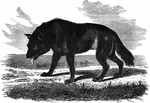
American Wolf
"The common wolf is of the size of a large dog; its usual color is a yelowish gray: the hair strong…
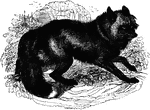
American Cross Fox
"The size is that of the common fox, the fur exceedingly long, soft, and rich; and, although presenting…
!["A detachment of the First South Carolina [African American] Federal Volunteers, under the command of Colonel Beard, repelling the attack of Confederate troops in the vicinity of Doboy River, GA." —Leslie, 1896](https://etc.usf.edu/clipart/11200/11251/doboy_11251_mth.gif)
Doboy River
"A detachment of the First South Carolina [African American] Federal Volunteers, under the command of…

Destruction of Merrimac
"Destruction of the Confederate ironclad steamer Merrimac, blown up by its commander, on the…

Confederate Position
"Confederate position near Centreville, Va., at the crossing of the Orange and Alexandria Railway over…
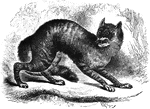
Caffre Cat
"F. Caffra , is about two feet long; its tail is long and bushy; its ground-color and of a…
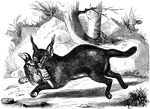
Caracal
"The Caracal, or Siyah Ghush, F. Caracal, is supposed by some to be the lynx of the ancients.…

Steamer Alabama
"The Confederate privateer steamer Alabama (290). Captain Raphael Semmes. Our illustration…
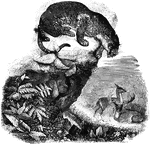
Jaguar
"Its length is four to five feet; the tail two feet; the height two feet; the ground-color of the body…
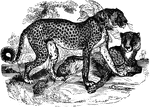
Cheetah
"In size and shape it is between the leopard and the hound. The color is yellowish fawn above, ad nearly…

Cape Ratel
"The hair is stiff and wiry; body above, from the top of the head to the root of the tail, dull ash-gray,…
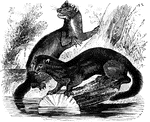
Mink
"The mink has a long slender body, the color varying in different species, is generally dark brown,…

Sea Bear
"It is the size of a large bear; girth at the sholder, five feet, near the tail, twenty inches; fur…
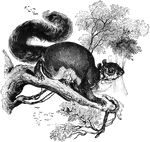
Malabar Squirrel
"The largest species of the genus, being the size of a cat. A part of the body above is brilliant red…

Black Agouti
"Is considerably smaller than the common agouti, being about the size of a rabbit, while the species…
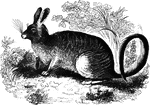
Cuvier's Lagotis
"Its general appearance reminds one of the hare. The body above is yellow, with a faint tinge of green…
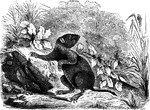
Black Pephagomys
"This is five inches long, of a black color, and has nearly naked ears; it feeds on vegetable substances,…
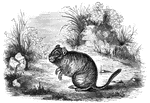
Octodon
"In size and shape, it resembles the water rat. The fur is long and moderately soft; upper parts of…

Battle of Baker's Creek
"Battle of Baker's Creek, May 16th, 1862- Defeat of the Confederates under Pemberton, by General Grant.…

Confederate rams
"Confederate rams from Charleston Harbor attacking the Federal blockading squadron, January 31st, 1863.…
